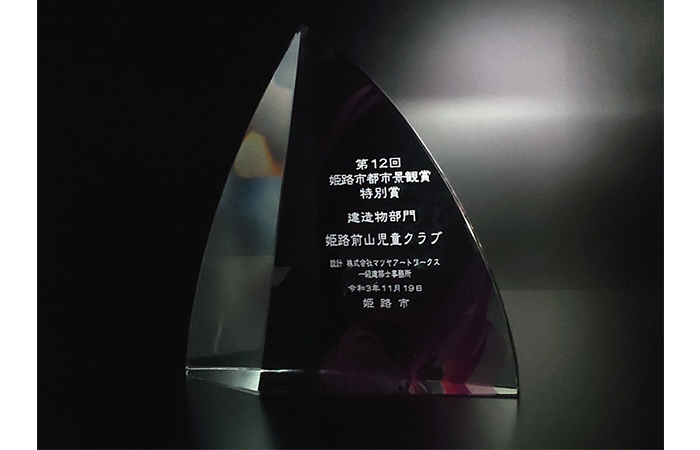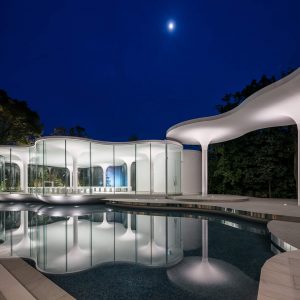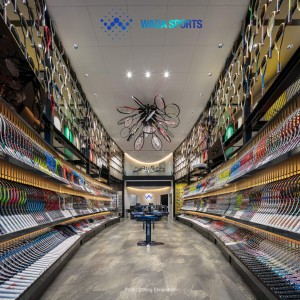- 公開日:2022/04/01
- 最終更新日:2024/10/03
CLIENT DATA
- 顧客:
- 社会福祉法人 姫路前山福祉会 様
- 屋号:
- 姫路前山児童クラブ
- 業種:
- 学童保育施設
- 工事種別:
- 新築工事
- 工期:
- 2019年9月~2020年3月
- 坪数:
- 約34坪
- 所在地:
- 姫路市御立中5丁目1148番13~14
- TEL:
- 079-298-3975
- 営業時間:
- ー
- 定休日:
- ー
- WEB:
- http://h-maeyama.com
Plan

−子どもたちと地域をつなぐトンネル建築−
保育園が運営する小学生のための学童保育施設。建設位置は園舎から見える位置が望ましく、園庭南に隣接する子ども農園の一角に設定された。しかし、そのロケーションに気がかりなことがあった。農園の南側には地域コミュニティの場となる公民館があり、園庭で遊ぶ園児たちの姿がこの地域の空気を和ませていた。更に園庭から見える農園は子どもたちに稲の成長を日々感じさせる貴重な食育の場となるものだったが、当該施設がそれらの関係を遮る存在となってしまう。地域と園庭、農園、コンテクストを分断せずに屋根をかけることが最適解であると考えた。公民館側からトンネル状の建物を見ると、農園の向こうに学童で過ごす子ども達が見え、そのトンネルの向こう側には園児達の遊ぶ姿が見える。園庭からは学童施設のガラス越しに農園の様子が見え、更に学童保育の小学生と園児達の新たなコミュニケーションが生まれる。
Roofing the Connection
An Architectural Portal That Connects Children to the Community. Roofing the Connection is a daycare facility for elementary school children, managed by the neighboring nursery school. The new building was most suitably to be set between the school’s playground and a children’s farm. However, across the children’s farm to the south, there is a community center where, among others, local elderly people gather and enjoy watching the children play and bring life to the neighborhood. A new building would block this view and make a disruption in the community life. Furthermore, the Children farm that was visible from the playground was a valuable food education place where children observe the cycle of rice growing in daily basis. The new facility is about integrating daycare children to the ensemble without breaking the connection between the community, the nursery school, and the children farm.
Looking at Architectural Portal-like building from the community center, you can see the children spending time behind the farm, and even the nursery kids in their playground behind the building. From the other side, the nursery kids look through the double-glazed façade of the daycare, observing the elementary school children and further to the farm and the community center. Instead of blocking the view, the new building has strengthened the communication between the different local community components.
−通っていることを自慢したくなる学童施設−
学童保育施設はややもすればプレハブの簡素な小屋等で運営されることもある。しかし今回の設計では学童保育施設らしくない姿を敢えて選択した。家族を養う仕事のためとは言え、毎日子どもを学童施設に預けることに対し、どこか後ろめたさを感じさせる古い社会の空気が未だ根付いていることは否めない。また小学生ともなれば親のそんな気持ちを感じ取り、預けられる自分をかわいそうな子と捉えてしまう子もいるかもしれない。そのような親子の深層心理におけるマイナス要素を押し上げ、むしろプラスへ転換させる仕掛けとして、デザインの力が寄与できるのではないかと考えた。また構造は建設コストを鑑み、日本において最も一般的な木造軸組工法、いわゆる在来工法を採用している。
– Proud of Going to Children Daycare –
Children daycare facilities in Japan are often basic light construction and even prefabricated ones sometimes. Roofing the Connection is not, it looks nothing like a regular childcare facility.
Among most reputable specificities of Japanese society is it contrast between modernity and tradition. As women are gaining more and more places in the work force, they are still in charge of taking care of their kids. The difficulty of meeting both ends discourages women to continue working and for those who chose to do so, they are still subject of self-guilt and the children may feel as less fortunate than others. Roofing the Connection is using the power of design to eliminate these negative psychological effects for both parents and children.
Antithetically, they both are now happy, proud, and looking forward to use the facility services and spaces.
While this spatial and architectural approach is set to reach its communal and societal goals,
the design complication resides in the limited budget to realize it. In contemplation of keeping the construction cost withing the designated budget, the new building was constructed using the most common wooden frame structure in Japan.
Photography
撮影:スターリン エルメンドルフ
YouTube
コメントを投稿するにはログインが必要です。
















コメントを投稿するにはログインしてください。